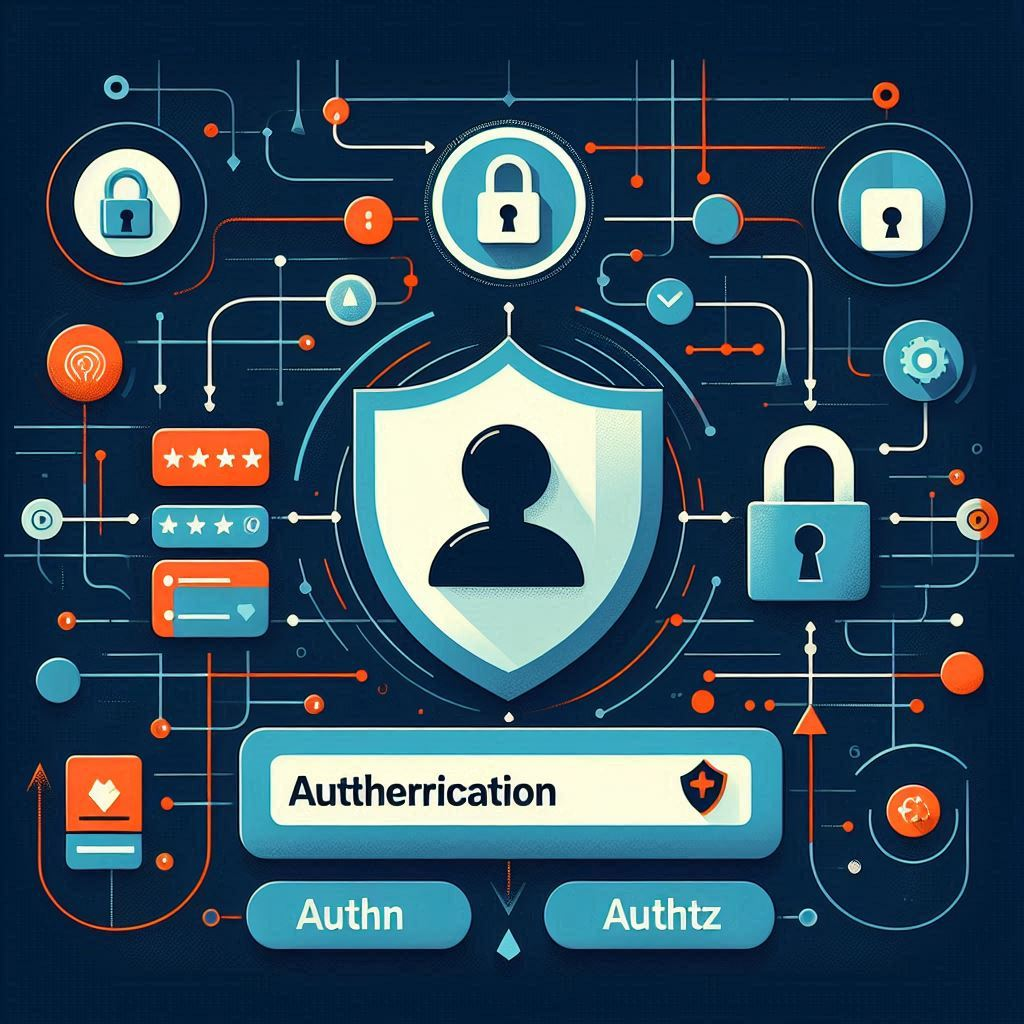Authentication and Authorization (AuthN, AuthZ)
Introduction:
In the realm of cloud computing, Authentication and Authorization cloud processes are fundamental for securing information systems. These processes, though distinct in purpose, are deeply interconnected. A clear understanding of their differences and synergy is critical for building secure and scalable cloud-based applications.
1. Understanding Authentication (AuthN)
Authentication (AuthN) is the process of verifying the identity of a user or system. It answers the question: “Who are you?” In cloud environments, ensuring secure authentication is vital to protect sensitive resources.
1.1 Types of Authentication
There are several methods of authentication, each with its strengths and weaknesses:
- Password-Based Authentication: This is the most common form of authentication. Users provide a username and password. While simple, this method can be vulnerable to attacks such as phishing and brute force.
- Multi-Factor Authentication (MFA): MFA enhances security by requiring two or more verification factors. For example, in addition to a password, a user might need to enter a code sent to their mobile device.
- Biometric Authentication: This method uses unique biological traits, such as fingerprints or facial recognition, to verify identity. While highly secure, it raises privacy concerns.
- Token-Based Authentication: In this method, It provides tokens after initial authentication, commonly used in APIs and web applications.
- Single Sign-On (SSO): SSO allows users to authenticate once and gain access to multiple applications without needing to log in again. This improves user experience but can create a single point of failure.
1.2 Authentication Protocols
Various protocols facilitate authentication, including:
- OAuth 2.0: A widely used authorization framework that allows third-party services to exchange user information without sharing passwords. OAuth is often used in conjunction with OpenID Connect for authentication.
- OpenID Connect: Built on top of OAuth 2.0, it provides a way to authenticate users and obtain their profile information.
- SAML (Security Assertion Markup Language): Common in enterprise environments for exchanging authentication and authorization data.
2. Understanding Authorization (AuthZ)
Authorization (AuthZ) determines what actions an authenticated user can perform and what resources they can access. It answers the question: “What can you do?”
2.1 Types of Authorization
Authorization can be implemented in several ways:
- Role-Based Access Control (RBAC): Users are assigned roles, and permissions are granted based on these roles. This simplifies management but can become complex with many roles.
- Attribute-Based Access Control (ABAC): Permissions are granted based on attributes (e.g., user attributes, resource attributes, environment conditions). This provides fine-grained access control but can be more challenging to implement.
- Access Control Lists (ACLs): Each resource has a list of users and their permissions. This method is straightforward but can become cumbersome with numerous resources.
2.2 Authorization Protocols
Common protocols for implementing authorization include:
- OAuth 2.0: While primarily an authorization framework, it also provides mechanisms for managing permissions and scopes.
- XACML (eXtensible Access Control Markup Language): A standard for expressing access control policies. It allows for complex rules and conditions based on user attributes.
3. Synergy of AuthN and AuthZ
Authentication and authorization are often confused, but they serve distinct purposes. Authentication must occur before authorization; a user must be verified before their permissions can be evaluated.
Workflow Example: In a web application, a user first logs in (authentication). Once logged in, the application checks the user’s roles and permissions to determine what resources they can access (authorization).
4. Implementing AuthN and AuthZ in Applications
When developing applications, it’s crucial to implement robust authentication and authorization mechanisms. Here are some best practices:
4.1 Secure Authentication
- Use Strong Password Policies: Enforce complexity requirements and regular password changes.
- Implement MFA: Add an extra layer of security to protect against compromised credentials.
- Secure Token Storage: Store tokens securely, using techniques like encryption and secure cookies.
- Regularly Update Authentication Protocols: Keep up with the latest security standards and best practices.
4.2 Effective Authorization
- Principle of Least Privilege: Grant users only the permissions they need to perform their tasks.
- Regularly Review Permissions: Conduct audits to ensure users have appropriate access levels.
- Use Logging and Monitoring: Track access and changes to sensitive resources to detect unauthorized access attempts.
5. Challenges in AuthN and AuthZ
Despite the best practices, implementing authentication and authorization can present challenges:
- User Experience vs. Security: Striking a balance between a seamless user experience and robust security measures can be difficult.
- Complexity of Management: As organizations grow, managing users, roles, and permissions can become increasingly complex.
- Integration with Legacy Systems: Many organizations have legacy systems that may not support modern authentication and authorization protocols.
6. Future Trends in Authentication and Authorization
As technology evolves, so do the methods and practices surrounding authentication and authorization:
- Passwordless Authentication: Solutions like biometrics and hardware tokens are gaining popularity as alternatives to traditional passwords.
- Decentralized Identity: Emerging technologies like blockchain are being explored for creating decentralized identity systems that give users control over their data.
- AI and Machine Learning: These technologies are being used to enhance security by detecting anomalies in authentication patterns and automating access control decisions.
Conclusion
Understanding the differences between authentication and authorization, implementing best practices, and staying informed about emerging trends are essential for protecting sensitive data and ensuring that users have appropriate access to resources. Authentication and Authorization in IT Systems are foundational elements of security in any system. As the digital landscape continues to evolve, so too will the strategies and technologies used to secure identities and permissions.
By prioritizing robust authentication and authorization practices, organizations can significantly reduce their risk of data breaches and unauthorized access, creating a safer environment for both users and systems. These practices not only enhance security but also improve overall system reliability and user trust, making them indispensable components of modern IT infrastructure.
If you need help with software services, visit Cloudastra Technologies. We specialize in providing top-notch software solutions tailored to your needs. Contact us for more business inquiries.
